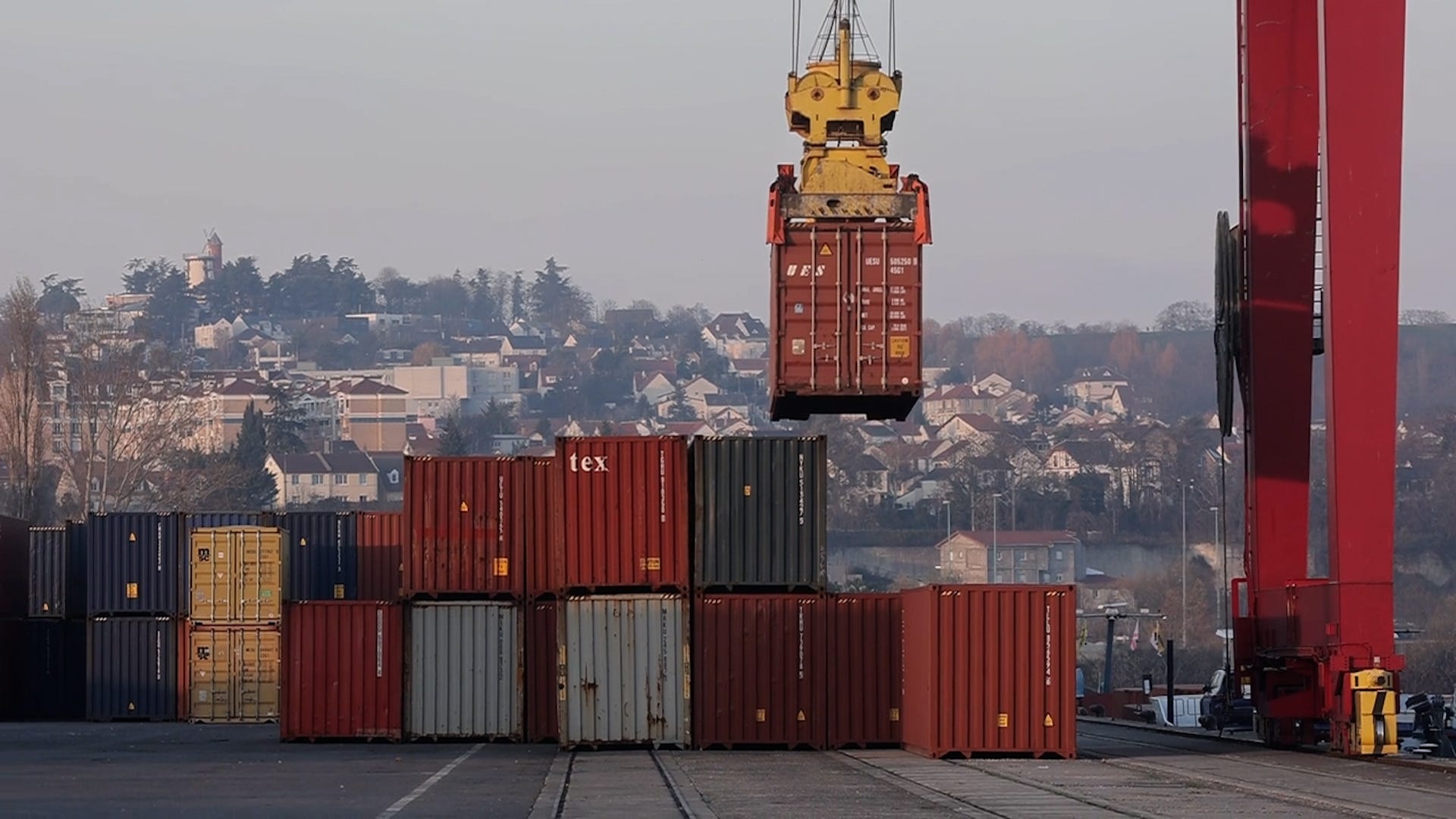Trump's China Tariffs: A 2025 Deadline And Its Economic Implications

Table of Contents
The Initial Rationale Behind Trump's China Tariffs
The Trump administration's imposition of tariffs on Chinese goods was justified under Section 301 of the Trade Act of 1974, citing unfair trade practices by China. The stated goals included reducing the massive US trade deficit with China, protecting American industries from allegedly subsidized competition, and addressing concerns about intellectual property theft and forced technology transfer.
- Industries Targeted: The tariffs initially targeted a broad range of sectors, including steel, aluminum, technology, and agricultural products. Later rounds expanded to encompass numerous other goods.
- Chinese Retaliation: China responded with its own retaliatory tariffs on US goods, escalating the trade war and impacting various American industries.
- Initial Economic Predictions: Economists offered varying predictions. Some argued the tariffs would boost domestic industries and reduce the trade deficit, while others warned of higher consumer prices, reduced economic growth, and disruptions to global supply chains.
Short-Term Economic Impacts of the Tariffs (2018-2020)
The immediate impact of Trump's China tariffs was complex and multifaceted. While some domestic industries experienced temporary benefits from reduced competition, many others faced increased input costs.
- Increased Prices for Consumers: Tariffs led to higher prices for many imported goods, impacting consumer spending and contributing to inflationary pressures.
- Impact on Specific Industries: While some sectors, like steel, saw potential short-term gains, others, particularly agriculture and manufacturing, suffered significant losses due to reduced exports to China and increased input costs.
- Global Supply Chain Disruptions: The trade war disrupted established global supply chains, forcing businesses to re-evaluate sourcing strategies and leading to increased costs and uncertainty.
- Statistical Data: Studies during this period showed mixed results. While some sectors saw increased domestic production, overall GDP growth was negatively impacted, and inflation rose. Government support programs, like agricultural subsidies, were implemented to mitigate some of the negative impacts.
Long-Term Economic Impacts and the 2025 Deadline
The long-term consequences of Trump's China tariffs continue to unfold. The 2025 deadline for certain tariff reviews raises crucial questions about the future trajectory of US-China trade relations.
- US-China Relations: The tariffs significantly strained US-China relations, creating an atmosphere of mistrust and uncertainty. This has implications far beyond trade, impacting diplomatic ties and cooperation on global issues.
- Continued Trade Tensions: Even after 2025, the possibility of renewed trade tensions remains high, depending on the future policies of both administrations.
- Global Trade and Supply Chain Restructuring: The tariffs accelerated the trend of businesses diversifying their supply chains, reducing reliance on China but also creating new challenges and costs.
- Impact on Specific Sectors: The long-term competitiveness of US industries in various sectors, including agriculture and manufacturing, is still being assessed. The structural changes in global trade patterns driven by the tariffs will likely have lasting impacts.
- Potential Scenarios Post-2025: Several scenarios are possible, ranging from a continuation of existing tariffs to a complete removal or renegotiation of trade agreements. Geopolitical factors, including the broader relationship between the US and China, will significantly influence these outcomes.
Alternative Trade Policies and Future Considerations
The experience with Trump's China tariffs highlights the need for a more nuanced and comprehensive approach to trade policy. Simply imposing tariffs is not a sustainable solution for addressing complex trade imbalances.
- Alternative Strategies: Alternative approaches include strengthening existing international trade institutions like the World Trade Organization (WTO), pursuing bilateral trade agreements that address specific concerns, and focusing on enhanced intellectual property protections through international cooperation.
- Benefits and Drawbacks: Each alternative strategy carries potential benefits and drawbacks. For example, bilateral agreements might address specific issues more effectively but could exclude other countries and potentially create new trade barriers. WTO dispute resolution provides a forum for resolving trade disputes but can be slow and cumbersome.
- International Cooperation: Addressing trade imbalances and promoting fair trade practices requires increased international cooperation and a commitment to multilateral solutions.
Conclusion: Assessing the Legacy of Trump's China Tariffs and Looking Ahead
Trump's China tariffs have had a complex and lasting impact on the US and global economy. The short-term effects included increased consumer prices and supply chain disruptions, while the long-term consequences involve reshaped global trade patterns and strained US-China relations. The 2025 deadline serves as a critical juncture for assessing the legacy of these tariffs and informing future trade policy. Moving forward, a more strategic and nuanced approach that considers alternative trade policies and international cooperation is crucial for fostering a stable and mutually beneficial trade relationship with China. Continue researching the impact of Trump's China tariffs and stay informed about developments in US-China trade relations, particularly as we approach 2025. Further reading on trade agreements, global economic policy, and US-China relations will provide a more complete understanding of this crucial topic.

Featured Posts
-
 800 000 Boost For Florida Space Coast Economic Development
May 18, 2025
800 000 Boost For Florida Space Coast Economic Development
May 18, 2025 -
 At And T Sounds Alarm On Broadcoms V Mware Deal 1 050 Price Increase Predicted
May 18, 2025
At And T Sounds Alarm On Broadcoms V Mware Deal 1 050 Price Increase Predicted
May 18, 2025 -
 Padres Tatis Jr Delivers Walk Off Win Angels Late Lead Evaporates
May 18, 2025
Padres Tatis Jr Delivers Walk Off Win Angels Late Lead Evaporates
May 18, 2025 -
 Kanye West Mia Syggnomi Pros Ton Jay Z Kai Tin Beyonce Meta Tin Kontra
May 18, 2025
Kanye West Mia Syggnomi Pros Ton Jay Z Kai Tin Beyonce Meta Tin Kontra
May 18, 2025 -
 Chat Gpt Gains Ai Coding Agent Enhancing Productivity And Efficiency
May 18, 2025
Chat Gpt Gains Ai Coding Agent Enhancing Productivity And Efficiency
May 18, 2025
Latest Posts
-
 Dying For Sex Unpacking Michelle Williams Experience With The Clasp Scene
May 18, 2025
Dying For Sex Unpacking Michelle Williams Experience With The Clasp Scene
May 18, 2025 -
 Marcello Hernandezs Stand Up Triumph At Ram Fest
May 18, 2025
Marcello Hernandezs Stand Up Triumph At Ram Fest
May 18, 2025 -
 Michelle Williams Dying For Sex Performance A Deeper Look At The Clasp
May 18, 2025
Michelle Williams Dying For Sex Performance A Deeper Look At The Clasp
May 18, 2025 -
 Audience Reactions Marcello Hernandezs Unforgettable Ram Fest Show
May 18, 2025
Audience Reactions Marcello Hernandezs Unforgettable Ram Fest Show
May 18, 2025 -
 Ram Fest 2024 Marcello Hernandezs Side Splitting Performance
May 18, 2025
Ram Fest 2024 Marcello Hernandezs Side Splitting Performance
May 18, 2025
